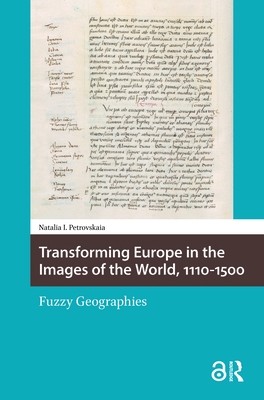
- We will send in 10–14 business days.
- Author: Natalia Petrovskaia
- Publisher: Amsterdam University Press
- ISBN-10: 904856316X
- ISBN-13: 9789048563166
- Format: 15.8 x 23.8 x 1.8 cm, kieti viršeliai
- Language: English
- SAVE -10% with code: EXTRA
Transforming Europe in the Images of the World, 1110-1500 (e-book) (used book) | bookbook.eu
Reviews
Description
This is the first book to examine the wide and important geographical tradition that arose from the description of the world in the Imago mundi - a medieval encyclopedic bestseller, almost unrivalled in popularity from its composition in the 1110s well into the age of print. The Imago mundi was translated into most European vernaculars and extracts from it were adapted into vernacular works ranging from encyclopedias to literary fiction, verse and prose. This is the first study to examine this tradition as a unified whole. It focuses in particular on the permutations undergone by the depiction of the region designated as 'Europe' in the original text and its later adaptations. The book demonstrates the incredible flexibility of the original text and how this enabled the transformation of this spatial description to suit the linguistic, political and cultural needs of vernacular adaptations.
EXTRA 10 % discount with code: EXTRA
The promotion ends in 21d.23:20:23
The discount code is valid when purchasing from 10 €. Discounts do not stack.
- Author: Natalia Petrovskaia
- Publisher: Amsterdam University Press
- ISBN-10: 904856316X
- ISBN-13: 9789048563166
- Format: 15.8 x 23.8 x 1.8 cm, kieti viršeliai
- Language: English English
This is the first book to examine the wide and important geographical tradition that arose from the description of the world in the Imago mundi - a medieval encyclopedic bestseller, almost unrivalled in popularity from its composition in the 1110s well into the age of print. The Imago mundi was translated into most European vernaculars and extracts from it were adapted into vernacular works ranging from encyclopedias to literary fiction, verse and prose. This is the first study to examine this tradition as a unified whole. It focuses in particular on the permutations undergone by the depiction of the region designated as 'Europe' in the original text and its later adaptations. The book demonstrates the incredible flexibility of the original text and how this enabled the transformation of this spatial description to suit the linguistic, political and cultural needs of vernacular adaptations.


Reviews